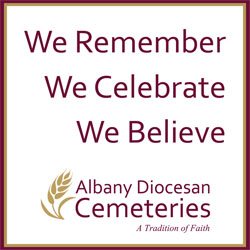April 6, 2018 at 1:53 p.m.
'With great power the Apostles gave their testimony to the resurrection of the Lord Jesus, and great grace was upon them all...' -- Acts 4:33
On this second Sunday of the Easter season, which is also Divine Mercy Sunday, each year we hear the same Gospel about Jesus' encounter with "doubting Thomas."
I am sure that many of us feel a certain sympathy for St. Thomas and his "doubts." After all, the good news of the risen Jesus seems just too good to be true. However, our readings really lead us to focus not so much upon Thomas and his doubts as such; but rather upon two key elements of our faith, and of being disciples of the risen Lord:
• The first is a reminder about our deep faith and belief in the risen Christ.
• The second is the role of the Christian community in our journey of faith and in our call to be witnesses of God's love and mercy.
In our first reading (Acts 2:42-47), we come in just after the day of Pentecost where St. Peter has preached about the risen Christ. In the reading, St. Luke, the writer of the Acts of the Apostles, gives us a snapshot of the very early Church community. It is characterized, above all, by generosity and sharing: of material goods, but also in prayer and in the breaking of bread.
Joyful, joyful
As on Easter Sunday, we then sing our "Easter psalm" of joy and thanksgiving (Ps 118:2-4,13-15,22-24) with its image of Jesus as the stone rejected by the builders that has become the cornerstone. The joy of this psalm is also focused on the amazing mercy that God has shown toward us and our call to live and to celebrate this great gift.
God's love is indeed everlasting. It echoes the opening prayer of Mass: "God of everlasting mercy...may [all] grasp and understand...in what font they have been washed, by whose Spirit they have been reborn, by whose blood they have been redeemed."
The second reading (1 Jn 5:1-6) is taken from what might be called a letter to the Church about love. We will revisit this letter several times during the season of Easter. St. John is very poetic in describing the immensity of God's love, but he is also very practical and focused.
In the section of the letter we hear at Mass this Sunday, John reminds us that our profession of love for God and neighbor must be visible and real. How can we do this? St. John gives us the answer: simply by keeping God's commandments.
Our Gospel (Jn 20: 19-31) must be one of the best-known Gospel passages, as Thomas finally meets the risen Jesus. The reality of the scene is captured beautifully by the artist Caravaggio in a painting called "The Incredulity of St. Thomas." (Do Google the painting and use it as an aid to praying about this Gospel encounter.) As always, the artist wants to teach us many things about the diverse levels of meaning in this Gospel.
Thomas looks suitably astonished as Jesus takes Thomas' finger and guides it toward the wound in His side. Here, Jesus, the one who brings new life, guides a human finger to that sign of life.
In painting
We may contrast this gesture to the finger of God that brought life to Adam in the famous fresco on the ceiling of the Sistine Chapel in Rome. Thomas and the two other disciples in the painting look very ordinary and Thomas' jacket has a tear in it. Caravaggio did this to show us that Jesus wants all of us, whoever we are, to see and to believe in His resurrection: "Blessed are those who have not seen and have believed."
Curiously, Jesus does not have a halo in the painting. Commentators think that Caravaggio wished to emphasize that Jesus' risen body is the same body that He had in His earthly life. This is, of course, part of our faith in the resurrection of the body that we say every time we recite the creed.
The Gospel concludes with a note about the many signs that Jesus did. In the Albany Diocese, we are preparing for our Eucharistic Congress. Our readings on this Divine Mercy Sunday remind us about the many signs we find in the Eucharist.
The Eucharist is the sacrament of God's love and mercy seen in the sacrifice Jesus made for us. The Eucharist is real. It is a real presence of the risen Jesus: body, blood, soul and divinity. It is also a call to faith and belief in the resurrection and the transforming power of God's love and mercy. Like St. Thomas and like the early Christians who met for the breaking of bread, may we see and may we believe![[In-content Ad]]
250 X 250 AD
250 X 250 AD
Events
250 X 250 AD






Comments:
You must login to comment.